America’s Toxic Wastelands: More than 20 million people live near sites contaminated with hazardous waste linked to infant mortality and cancer
More than 20 million Americans live within a mile of toxic waste sites linked to infant mortality, cancer and mental health problems.
The Environmental Protection Agency (EPA) listed 1,340 “Superfunds” in 2024, which are sites where hazardous materials were dumped, discarded, or improperly managed.
New Jersey has the most with 155 in the entire state, including the Raritan River, which was polluted by chemicals and pharmaceuticals for nearly a century.
A decommissioned gold mine in California released acid waste into a local river, causing an increase in cancer in the surrounding community; one in 50 people was affected by the disease.
In Pennsylvania, a Styrofoam manufacturer dumped chemicals into water systems used by more than 76,000 people and into a site in Pensacola, Florida, where a factory produces fertilizer that contaminates groundwater, sludge and soil.
The Environmental Protection Agency (EPA) has listed 1,340 Superfund sites as of 2024 where hazardous materials were dumped, discarded, or improperly managed. More than 20 million Americans live within a mile of the sites
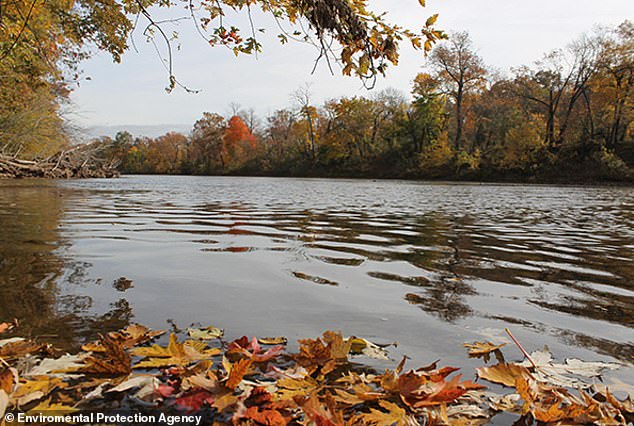
New Jersey has the most with 155 sites across the state, including the Raritan River of the US Cyanamid site, where chemicals and pharmaceuticals were dumped and coal tar was distilled into the water for nearly a century (photo)
Janet McCabe, deputy administrator of the EPA, said communities across the country have been “long overburdened by pollution” that poses “dangerous health risks.”
Another super fund in Laramie, Wyoming, is home to the Baxter/Union Pacific Tie Treating location.
The Union Pacific Railroad (UPRR) operated the plant for treating railroad ties and other wood preserving operations intermittently from 1886 to 1983.
The company was known for historic spills of now banned chemicals that affected breathing, and these toxins leaked into soil and groundwater.
The Superfund was created as a trust fund created by Congress in 1980 to reuse land polluted by heavy industry – but only this year has money been added to help communities.
In February, President Joe Biden announced $1 billion to fund cleanup projects at 25 hazardous waste sites from New Jersey to Oregon.
New Jersey has three locations under 25, including Raritan Bay Slag in Old Bridge and Sayreville.
Sea Land Development Corporation built a seawall in the area using waste from the Atlantic Ocean, which was used to smelt metal in the late 1960s to early 1970s.
The debris hit about 750 meters of the sea wall, forcing parts of the waterfront to remain closed.
There are ongoing concerns about the effects of lead which has been shown to accumulate not only on the seabed, but also in birds, fish and humans.
Brian K. Thompson, attorney for the EPA, said, “The lead contamination at the Raritan Bay beach and park is a threat to the health of the people who live in this community and it is now time for NL (National Lead) Industries to fulfill its legal responsibility to carry out the cleanup.
“The cleanup means children can play safely on the beach and everyone can enjoy the beach without fear of lead exposure.”
In Clackamas, Oregon, the funding will help clean up the Northwest Pipe & Casing/Hall Process Company site where pipes were made and coated between the 1950s and 1980s, contaminating soil and groundwater with solvents, primers, coal tar and other pollutants. said.
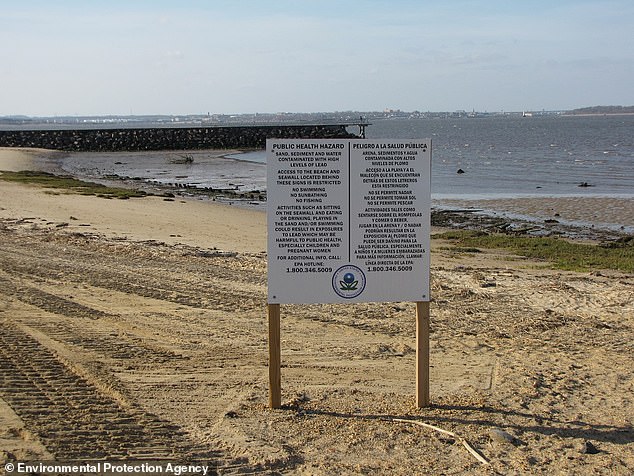
Raritan Bay Battle in New Jersey in Old Bridge and Sayreville is one of 155 Superfund sites. Sea Land Development Corporation built the Laurence Harbor sea wall and western jetty using waste from the bottom of industrial blast furnaces
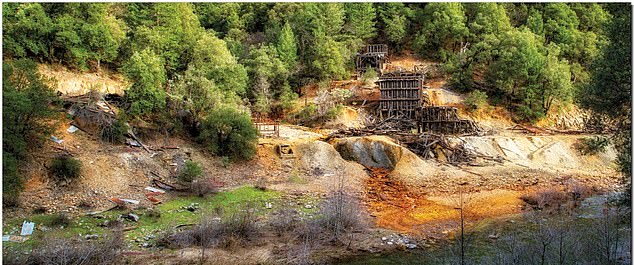
California has the second-highest number of Superfund sites, with 96 across the state, including the Argonaut mine in Jackson. The photo shows the drainage of an acid mine emptying into a nearby river
The two leading causes of death in Clackamas County are serious cardiovascular disease and cancer, with bronchi, lungs and breasts being the leading causes.
California has the second-highest number of Superfund sites, with 96 across the state, including the Argonaut mine in Jackson.
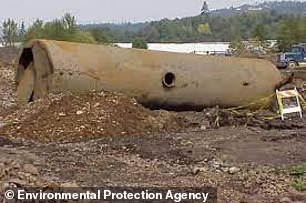
In Clackamas, Oregon, the funding will help clean up the Northwest Pipe & Casing/Hall Process Company site where pipes were made and coated
The mine was a hard rock gold mine from the 1850s to 1942, where raw ore was processed and mercury was combined to extract gold from the crushed ore.
The process contaminated the soil with arsenic, lead and mercury.
Argonaut High School is located approximately 70 meters west of the Tailings Area and Jackson Junior High School is 170 meters to the east.
The EPA has committed $25 million to clean up the mine from June 1, 2022 to November 2023.
John Hillenbrand, EPA geologist and project manager at the Argonaut Mine Superfund Site, said, “The amount of risk reduction has been tremendous.
‘Before the clean-up, the risk of cancer in this particular area was one in 50. Now that has been reduced to one in 10,000.’
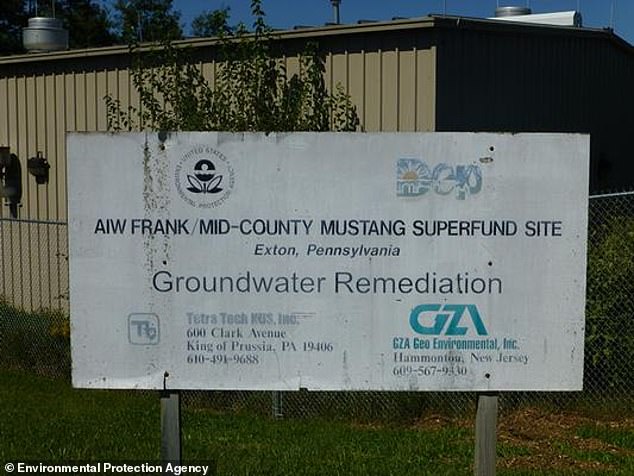
The AIW Frank Corp. (AIW)/Mid-County Mustang site covers 16 acres in Exton. The facility produced Styrofoam cups and plates and used chemicals to clean machines that affect the human central nervous system
Pennsylvania has the third most Superfund sites in the US, numbering 91.
The AIW Frank Corp. (AIW)/Mid-County Mustang site covers 40 acres in Exton, Chester County, Pennsylvania.
The facility produced Styrofoam cups and plates and used chemicals to clean machines that affect the human central nervous system.
The solvents used to clean car engines were discharged into floor drains in the building and from there into an on-site stone drain field.
In December 1983, a CDS Investments consultant discovered TCE, PCE, methylene chloride, and carbon tetrachloride in the floor drain and drain field.
Chester County is also where 957 miles of streams were deemed “impaired,” meaning they do not meet water quality standards
An estimated 76,700 people obtain drinking water from public and private sources within a three-mile radius of the site.
